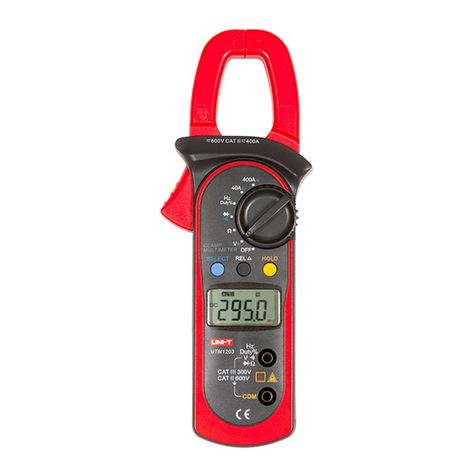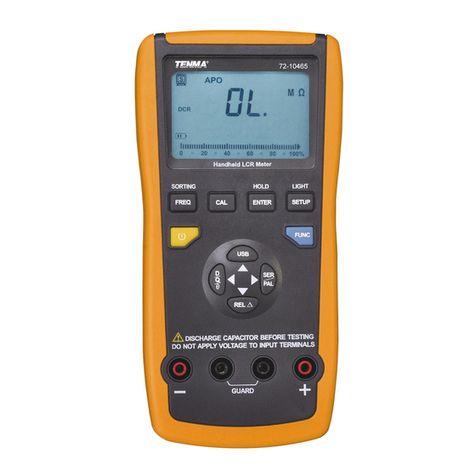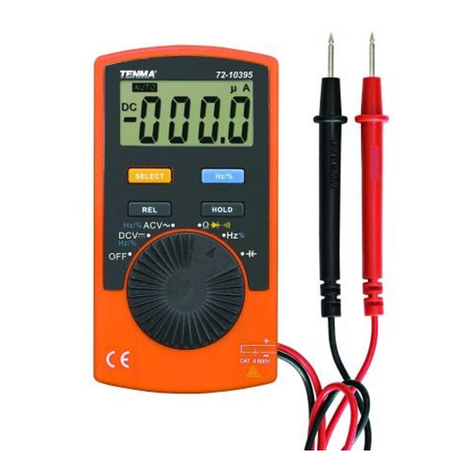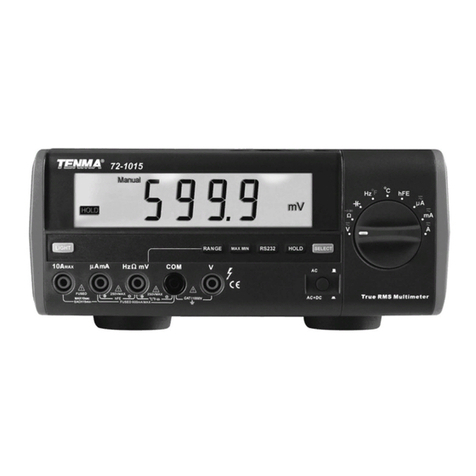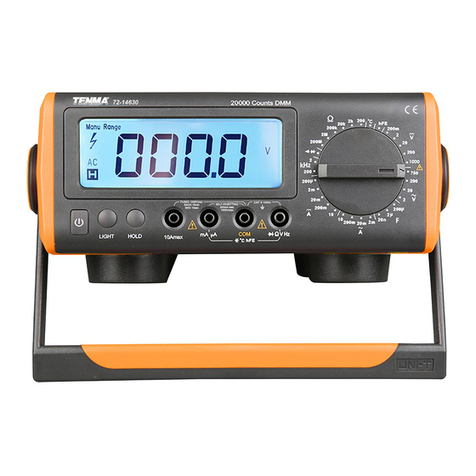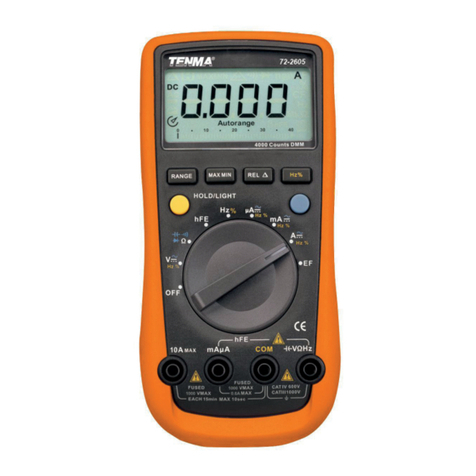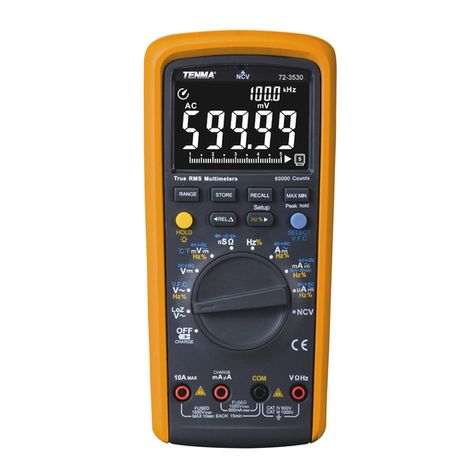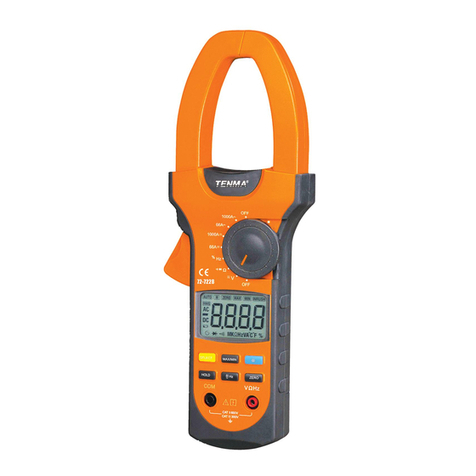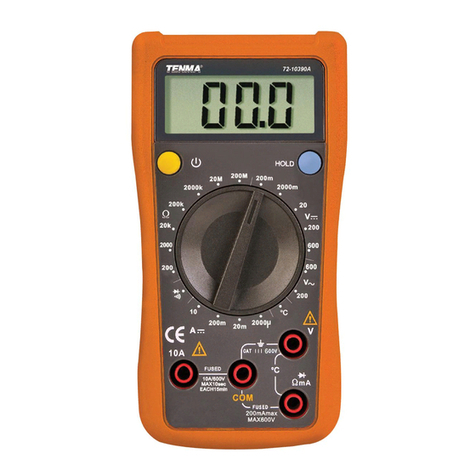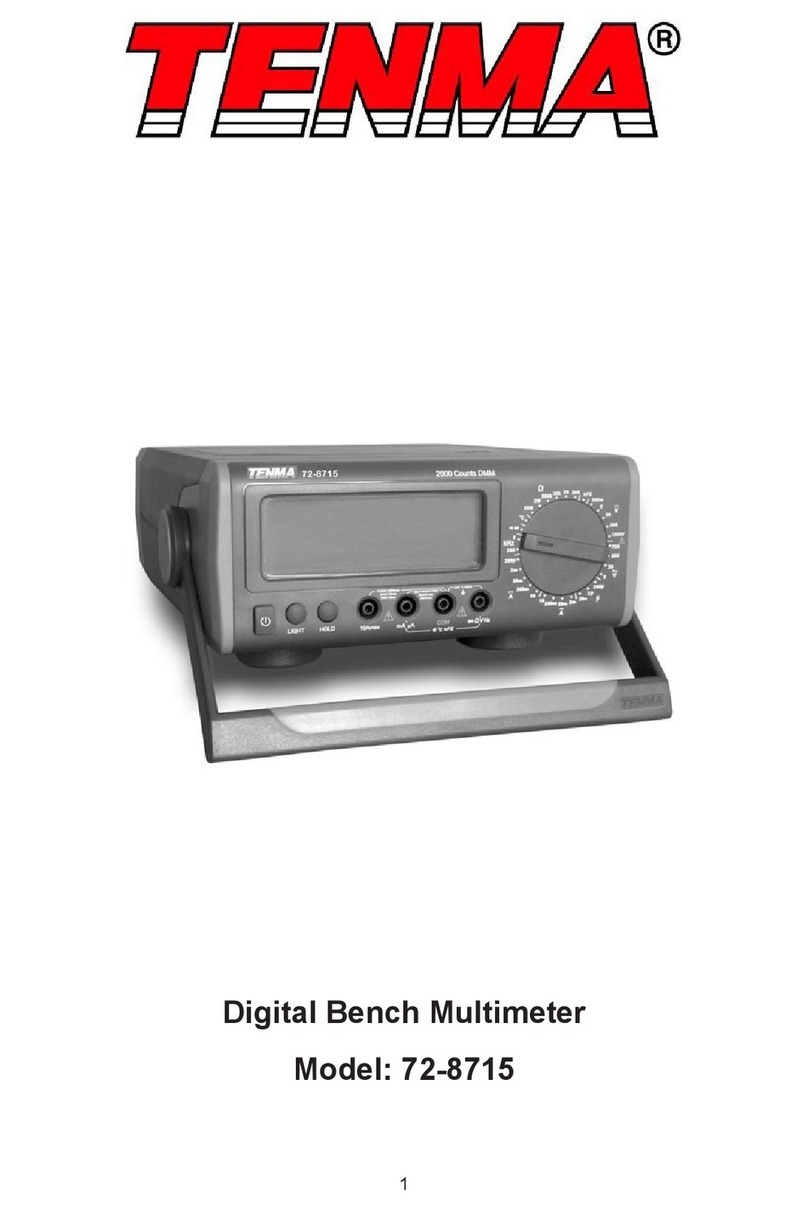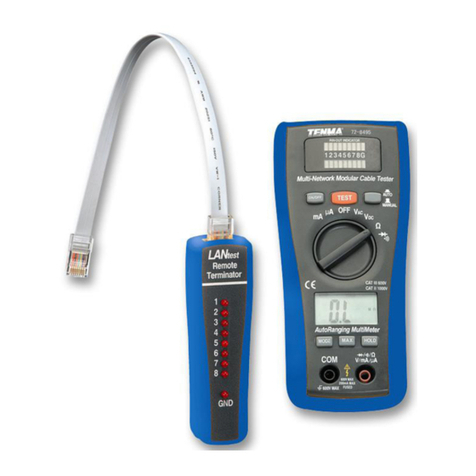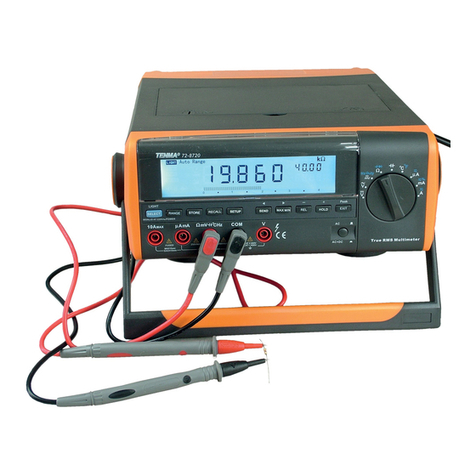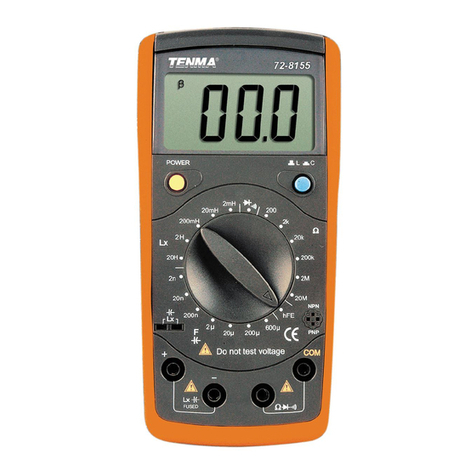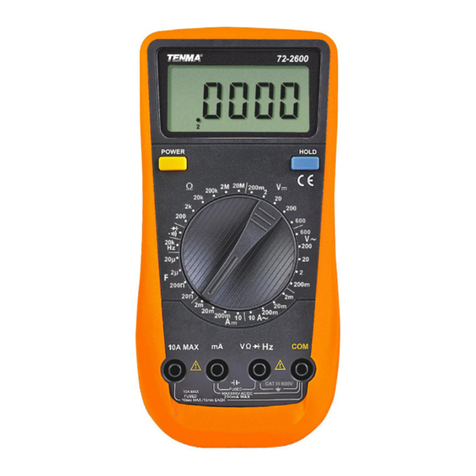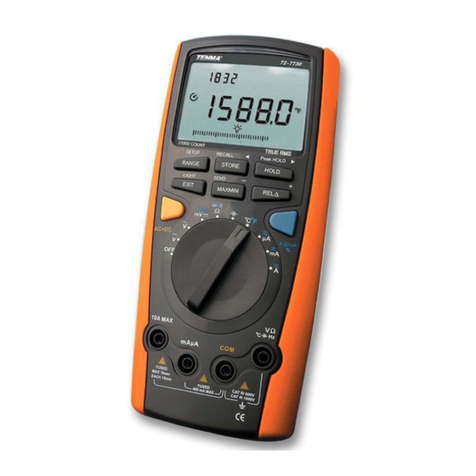Digital Multimeter
Page <1> 20/09/10 V1.1
http://www.farnell.com
http://www.newark.com
http://www.cpc.co.uk
Table of Contents
Title Page
Overview ------------------------------------------------------------------------------------------------------------------ 2
Unpacking Inspection -------------------------------------------------------------------------------------------------- 2
Safety Information ------------------------------------------------------------------------------------------------------ 3
Rules For Safe Operation ------------------------------------------------------------------------------------------- 3
International Electrical Symbols ----------------------------------------------------------------------------------- 4
The Meter Structure --------------------------------------------------------------------------------------------------- 5
Rotary Switch ----------------------------------------------------------------------------------------------------------- 6
Functional Buttons ----------------------------------------------------------------------------------------------------- 7
Display Symbols ------------------------------------------------------------------------------------------------------- 8
Measurement Ranges
A. Selecting a Measurement Range ----------------------------------------------------------------------------- 9
B. Manual Ranging and Autoranging ---------------------------------------------------------------------------- 9
Measurement Operation
A. DC Voltage Measurement -------------------------------------------------------------------------------------- 10
B. AC Voltage Measurement -------------------------------------------------------------------------------------- 11
C. Measuring Resistance ------------------------------------------------------------------------------------------ 12
D. Testing for Continuity ------------------------------------------------------------------------------------------ 13
E. Testing Diodes ---------------------------------------------------------------------------------------------------- 14
F. Capacitance Measurement ------------------------------------------------------------------------------------ 15
G. Frequency Measurement -------------------------------------------------------------------------------------- 16
H. Measuring Duty Cycle ------------------------------------------------------------------------------------------ 17
I. Temperature Measurement
(Model UT60C) -------------------------------------------------------------------------------------------------- 18
J. DC or AC Current Measurement ------------------------------------------------------------------------------ 18
Operation of Hold Mode ------------------------------------------------------------------------------------------- 20
The Use of Relative Value Mode ------------------------------------------------------------------------------- 20
The POWER Button --------------------------------------------------------------------------------------------------- 21
The BLUE Button ----------------------------------------------------------------------------------------------------- 21
Turning on the Display Backlight ------------------------------------------------------------------------------- 21
Sleep Mode (Model UT60C) --------------------------------------------------------------------------------------- 21
General Specifications ------------------------------------------------------------------------------------------- 21
Accuracy Specifications
A. DC Voltage ------------------------------------------------------------------------------------------------------- 22
B. AC Voltage -------------------------------------------------------------------------------------------------- ----- 22
C. Resistance ---------------------------------------------------------------------------------------------------- 22
D. Continuity Test -------------------------------------------------------------------------------------------------- 23
E. Diode Test ----------------------------------------------------------------------------------------------------- 23
F. Capacitance 23
G. Frequency & Duty Cycle -------------------------------------------------------------------------------------- 23
H. Temperature (Model UT60C) --------------------------------------------------------------------------------- 24
I. DC Current ------------------------------------------------------------------------------------------------------ 24
J. AC Current --------------------------------------------------------------------------------------------------------- 24
Maintenance
A. General Service -------------------------------------------------------------------------------------------------- 25
B. Testing the Fuses ------------------------------------------------------------------------------------------------ 25
C. Replacing the Battery ------------------------------------------------------------------------------------------ 26
D. Replacing the Fuses ------------------------------------------------------------------------------------------ 27
